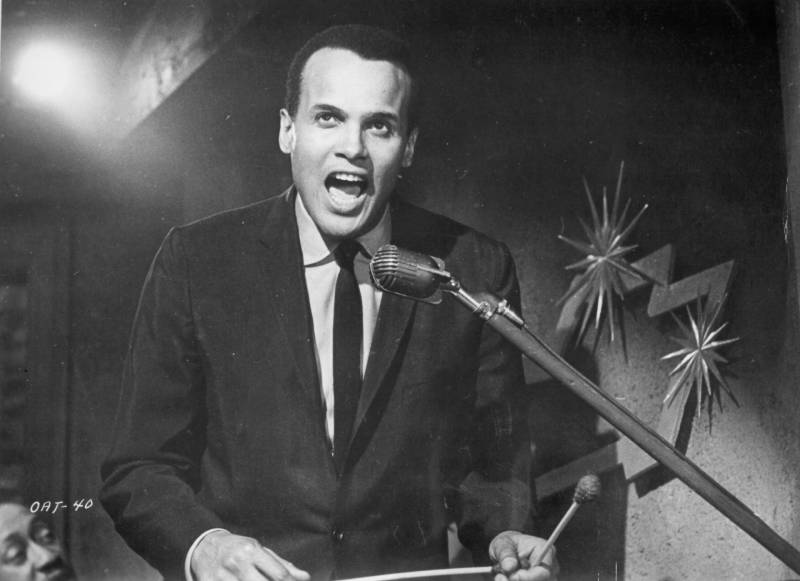On Tuesday, the towering pioneer Harry Belafonte passed away at 96. For many, Belafonte’s image as a humanitarian looms large. Notably, he was a close friend and collaborator with Martin Luther King Jr., protested against South African apartheid, and was an outspoken critic of American leadership, including George W. Bush’s decision to invade Iraq.
Three Harry Belafonte Performances You Won't Want to Miss

But he also rose to fame as a popular recording artist and star of stage and screen, in a career that spanned multiple decades. During the 1950s, he was the rare Black actor to achieve leading man status in Hollywood (see: Carmen Jones; The World, the Flesh and the Devil) and his album Calypso, featuring his signature hit “Banana Boat Song,” was a best-seller. He was an EGOT winner (including a non-competitive Jean Hersholt Humanitarian Oscar) and a driving force behind the creation of the 1985 all-star charity single, “We Are the World.” He even created one of the most memorable moments in Muppet history.
Quite frankly: Belafonte’s influence touched so many corners of popular culture and political progress, and his death marks a huge loss for the arts and activist communities. The recommendations below represent a mere fraction of his immense wealth of creative contributions — but they’re among his very best.
Odds Against Tomorrow (1959)
In one of the last great film noirs of the classic era, Belafonte stars as Johnny Ingram, a gambling addict and nightclub singer in deep debt to a mobster. Desperate to wipe the slate clean (and protect his ex-wife and their daughter), Johnny teams up with a crooked ex-cop, played by Ed Begley Sr. and a racist ex-con, played by Robert Ryan. The cast is stacked and director Robert Wise is working at the top of his game, but Belafonte stands out in part because he’s playing a complex character in an era where even his peer and close friend Sidney Poitier was often stuck in one-dimensional roles. Johnny is a tense and edgy performance, simmering with resentment and urgency from a hard life.
Buck and the Preacher (1972)
Not to downplay his many accomplishments, but it’s worth noting Belafonte was also very beautiful. Those matinee idol looks helped propel him to stardom, but in the revisionist western Buck and the Preacher — Sidney Poitier’s directorial debut — he gets to let loose by playing against type as a shady vagabond named Preacher, who dons matted hair and yellowed teeth. Set shortly after the end of the Civil War, Preacher teams up with Poitier’s solemn and stately Buck to help protect formerly enslaved Black people from white mercenaries who want to force them back to work on plantations. Preacher’s a huckster brimming with bombast, and Belafonte chews up the scenery in this great performance.
BlacKKKlansman (2018)
Belafonte’s final film appearance might also be among his most fitting. He only appears in one scene of Spike Lee’s historical drama as a fictional character recounting the real-life 1916 lynching of Jesse Washington. Belafonte, seated in a wicker chair that recalls a famous image of Black Panther Huey P. Newton, is positioned as an elder statesman. As he describes the horrors of that lynching and draws a connection to D.W. Griffith’s Birth of a Nation, he’s essentially playing a version of himself: A stirring storyteller and political force, passing down wisdom and history to the next generation of activists.
This episode was produced by Candice Lim and edited by Jessica Reedy. It was hosted by Stephen Thompson. The text was edited by Ciera Crawford.
9(MDAxOTAwOTE4MDEyMTkxMDAzNjczZDljZA004))

